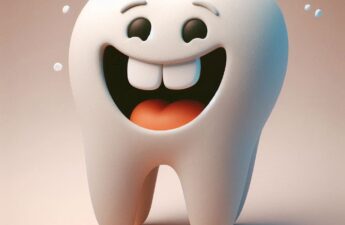ACEs linked to at least 5 of the top 10 leading causes of death – CDC

From the U.S. Centers for Disease Control and Prevention
At least five of the top 10 leading causes of death are associated with adverse childhood experience (ACE), according to a new report from the U.S. Centers for Disease Control and Prevention [CDC].
Preventing ACEs could potentially reduce chronic diseases, risky health behaviors, and socioeconomic challenges later in life, the agency said.
ACEs can include experiencing abuse, witnessing violence or substance misuse in the home, and having a parent in jail.
Exposure to ACEs can result in extreme or repetitive toxic stress responses that can cause both immediate and long-term physical and emotional harms.
At least five of the top 10 leading causes of death are associated with ACEs. Preventing ACEs could potentially reduce chronic diseases, risky health behaviors, and socioeconomic challenges later in life.
CDC Director Robert Redfield, M.D.
“We now know that adverse childhood experiences have a significant impact on an individual’s future health,” said CDC Director Robert R. Redfield, M.D. “Preventing traumatic experiences in childhood and initiating key interventions when they do occur will lessen long-term health consequences and benefit the physical and emotional well-being of individuals into adulthood.”
ACEs are common and their impacts add up over time
CDC scientists analyzed data from more than 144,000 adults and found:
- ACEs are linked to chronic health problems, mental health, substance misuse, and reduced educational and occupational achievement.
- Preventing ACEs has the potential to reduce leading causes of death such as heart disease, cancer, respiratory disease, diabetes, and suicide.
- ACEs prevention can have a positive impact on education and employment levels.
Key findings
- Adults reporting the highest level of ACEs exposure had increased odds of having chronic health conditions, depression, current smoking, heavy drinking, and socioeconomic challenges like current unemployment, compared to those reporting no ACEs.
- Women, American Indian/Alaskan Natives, and African Americans/Blacks were more likely to experience four or more ACEs.
- Preventing ACEs could have reduced the number of adults who had heart disease by as much as 13% – up to 1.9 million avoided cases, using 2017 national estimates.
- Preventing ACEs could have reduced the number of adults who were overweight/obese by as much as 2% – up to 2.5 million avoided cases of overweight/obesity, using 2017 national estimates.
- Preventing ACEs could have reduced the number of adults with depression by as much as 44% – up to 21 million avoided cases of depression, using 2017 national estimates.
CDC is working to understand and prevent ACEs
CDC works to prevent ACEs and lessen their negative effects. These efforts include:
- Educating states and communities about effective social and economic supports that address financial hardship and other conditions that put families at risk for ACEs.
- Encouraging employers to adopt and support family-friendly policies such as paid family leave and flexible work schedules. https://go.usa.gov/xVa6mexternal icon
- Increasing access to programs that enhance parents’ and youths’ skills to handle stress, resolve conflicts, and reduce violence. https:/go.usa.gov/xVQ8sexternal icon
- Improving school environments to lessen the impact of ACEs and prevent further trauma. https://go.usa.gov/xpYZYexternal icon
- Educating healthcare providers to recognize current risk in children and ACEs history in adults, and to refer patients to effective family services and support. https://go.usa.gov/xVa65external icon
CDC encourages communities to take advantage of the best available evidence and join CDC in efforts to prevent ACEs. Everyone can help: Parents, teachers and school counselors, religious leaders, business leaders, health care professionals, and charitable organizations.
What can everyone do to help prevent ACEs?
- Recognize challenges families face and offer support and encouragement to reduce stress.
- Support community programs and policies that provide safe and healthy conditions for all children and families. http://go.usa.gov/xVvqDexternal icon
To read the entire Vital Signs report, visit: www.cdc.gov/vitalsigns/
For more information about CDC’s work on ACEs, please visit: https://go.usa.gov/xpYBuexternal icon


